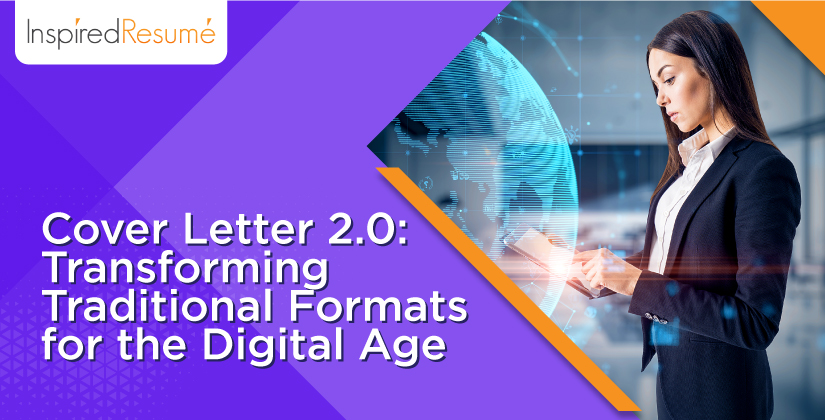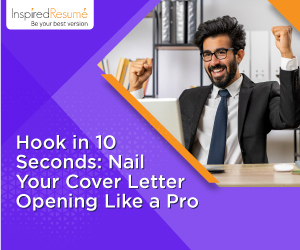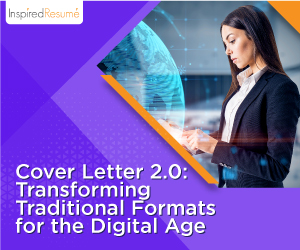The humble cover letter, once a static and formal page accompanying resumes, has evolved over the years with dynamic designs and digital platforms. It’s no longer just about ticking a box to introduce yourself. Employers are overloaded with applications, and capturing attention has never been more challenging. To stand out, job seekers are ditching the old approach in favor of creative, modern cover letter formats that go beyond the traditional text-heavy document.
This new wave of cover letters is breaking free from the confines of text-heavy formats, allowing candidates to showcase their personality, creativity, and skills in ways that go beyond mere words. Let’s dive into some innovative formats that are disrupting the standard approach and giving job seekers a competitive edge.
Are you looking for a Professional Cover Letter Writing Service? GET IT HERE!
The Shift: Why Innovation Matters
In a world where LinkedIn profiles, personal websites, and digital portfolios have taken center stage, a standard text-based cover letter might seem like yesterday’s news. Hiring managers are increasingly looking for applicants who not only match qualifications but also display innovation, adaptability, and personality; qualities that a conventional cover letter might struggle to convey.
This need for creativity has given birth to new and dynamic formats that enable applicants to demonstrate their skills, tell a compelling story, and grab attention in ways that words on a page can’t.
1. Video Cover Letters: Putting Personality on Display
One of the most exciting advancements in the cover letter landscape is the introduction of video cover letters. Video cover letters allow candidates to speak directly to hiring managers, offering a more personal and engaging way to communicate their passion for a role. This format can highlight a candidate's enthusiasm, communication skills, and confidence in ways that text simply can't.
Imagine a candidate applying for a marketing position. Through a one-minute video, they can explain why they're passionate about the brand, present a relevant idea they've brainstormed, and even include visuals or short clips from previous projects. The hiring manager immediately sees how the candidate thinks, presents ideas, and fits into the company culture.
While video cover letters aren’t yet the norm, they are gaining traction. The rise of platforms like Vidyard has made it easier for candidates to create and share these videos seamlessly, adding a modern, personal touch to their applications. However, it's essential to ensure these videos are polished and professional; quality production, clear messaging, and a concise delivery are key.
2. Interactive PDFs: Bringing Cover Letters to Life
Another rising trend in Cover Letter 2.0 is the use of interactive PDFs. These are not your run-of-the-mill PDF attachments; they are thoughtfully designed and embedded with interactive elements such as hyperlinks, videos, or animations that showcase your work, skills, and personality.
For example:
- A marketing professional can include links to their portfolio within the cover letter.
- A UX designer can demonstrate interactive design principles with clickable features or samples of work.
- An educator could include short video clips of classroom activities or lessons.
Interactive PDFs provide a multi-dimensional experience, combining professionalism with creativity. They allow you to go beyond words and demonstrate the practical value you bring to the table in a format that’s visually appealing and engaging. The key to success with interactive PDFs is balance. While it's tempting to go overboard with clickable features, the document should still be easy to navigate and focused on delivering the core message of why the candidate is a strong fit for the role.
3. Infographic Cover Letters: A Visual Storytelling Tool
For those looking to make an immediate visual impact, infographic cover letters are another innovative option. These cover letters transform text into easily digestible visuals, making it simple for recruiters to scan and grasp key information quickly. Using a combination of charts, graphs, icons, and other visual elements, candidates can present their skills, experience, and achievements in a way that’s both creative and professional.
For instance, a candidate applying for a data analyst position could create an infographic that visually maps out their skills in data visualization, analytics tools, and project success rates. Not only does this provide an immediate snapshot of their abilities, but it also demonstrates their proficiency in conveying complex information clearly; an essential skill for many roles.
However, it’s crucial to remember that content is still king. An infographic cover letter should not sacrifice substance for style. It should complement a resume by summarizing key points while still being compelling and informative.
Read here: What Is An Infographic Resume And How To Create One
4. Social Media-Integrated Cover Letters
With social media increasingly becoming part of our professional lives, it’s no surprise that job seekers are weaving their online presence into their applications. In Cover Letter 2.0, you can include links to relevant social profiles; like a professional Instagram account showcasing design work, a YouTube channel with speaking engagements, or a LinkedIn article that demonstrates thought leadership.
Integrating these profiles into your cover letter shows that you are not only tech-savvy but also proactive in curating your professional brand. These external platforms provide hiring managers with a fuller picture of your qualifications, interests, and impact.
5. Storytelling Formats: Making an Emotional Connection
Incorporating storytelling into cover letters is another way to transform the traditional format. Storytelling provides context, humanizes your application, and offers insight into your journey and why you are passionate about the role. While it’s important to remain professional, sharing a personal anecdote about why you are drawn to the company or how your career path led you to this opportunity can make a powerful emotional connection.
For instance:
- Instead of: “I have 5 years of marketing experience.”
- Try: “My passion for marketing began when I helped a small family-owned bakery develop an online presence, increasing their foot traffic by 40%. This experience cemented my love for building brands, which is why I’m excited about this role at [Company].”
A touch of humanity can leave a lasting impression, setting you apart from other candidates who stick to a purely professional script.
6. The Hybrid Approach: Text + Media Integration
While some recruiters may prefer more traditional formats, others are open to multimedia-rich approaches. A hybrid cover letter format combines both text and media elements, striking a balance between formality and innovation. Candidates can include links to their LinkedIn profiles, online portfolios, or short video introductions within a written cover letter, offering the best of both worlds.
In this format, applicants maintain the professionalism of a standard cover letter but augment it with digital tools to create a more comprehensive and engaging application. This approach is particularly useful when applying to industries that value both written communication and digital literacy, such as marketing, design, or tech.
7. Cover Letter Websites: A Standalone Digital Showcase
For tech-savvy job seekers, creating a standalone website as a cover letter can be a powerful way to demonstrate both their skills and interest in the role. This approach works particularly well for roles in web development, design, or content creation, where digital competency is a crucial part of the job.
A cover letter website could include an introductory video, sections on why the candidate is a good fit for the role, links to work samples, testimonials from previous employers or clients, and even a blog where they discuss industry trends. By curating all of this content in one space, candidates can create a lasting impression and provide recruiters with a more holistic view of their expertise.
The Key to Success: Customization and Relevance
While these modern formats are exciting and innovative, the key to success lies in customization. A video cover letter or interactive PDF should never be generic. It should be tailored specifically to the company and role you’re applying for. This demonstrates genuine interest, research, and attention to detail; qualities every employer values.
Also, it’s crucial to consider the company’s culture. While a tech startup or creative agency may appreciate the boldness of a video, a more traditional firm might prefer an interactive PDF or a well-crafted storytelling letter. Know your audience, and tailor your approach accordingly.
Bottom Line: Cover Letters for the Digital Age
The job market is more competitive than ever, and standing out is no longer just about the words you choose but the format in which you deliver them. Cover Letter 2.0 allows job seekers to inject personality, creativity, and innovation into their applications, helping them rise above the crowd. Whether through a video, an interactive PDF, or a social media-enhanced approach, the modern cover letter is about more than just saying you’re the right fit; it’s about showing it.
So, as you prepare for your next job application, don’t be afraid to embrace these new formats. Let your creativity shine, and leave a lasting impression in the minds of hiring managers. After all, the future of cover letters is here, and it’s time to make it your own.
Also read: How To Write A Cover Letter According To The Job Description




